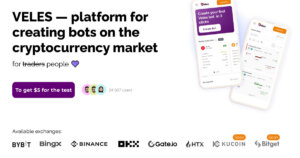 Op-ed: US banks launch 24/7 Instant Payments – does FedNow reduce risk of CBDCs?
Op-ed: US banks launch 24/7 Instant Payments – does FedNow reduce risk of CBDCs? Op-ed: US banks launch 24/7 Instant Payments – does FedNow reduce risk of CBDCs?
FedNow promises instant transactions round the clock, stirring debates on the necessity for a digital dollar.

Cover art/illustration via CryptoSlate. Image includes combined content which may include AI-generated content.
The U.S. Federal Reserve’s (Fed) long-awaited instant payment service, FedNow, is set to launch imminently, promising a significant development in the country’s payment system.
As reported by Reuters on July 20, with this service, everyday Americans will soon be able to send and receive funds in real-time, 24/7, a revolutionary stride in the U.S. financial ecosystem.
Instant Payments
The concept of instant payments is anchored in the transmission of the payment message and the availability of ‘final’ funds to the payee in real-time or near-real-time on a 24-hour and seven-day basis.
According to FedNow, this payment option must enable both payer and payee to see the transaction reflected in their respective account balances immediately and provide funds that the payee can use right after the payer initiates the payment. In essence, an instant payment is irrevocable, meaning it cannot be reversed by the payer or the payer’s financial institution (F.I.) once sent.
Despite being home to many financial innovations, the U.S. has lagged behind in adopting instant payments. Countries including the United Kingdom, India, Brazil, and the European Union have had similar services in operation for years, as reported by Reuters.
This delay in uptake has been attributed mainly to the antiquated and painfully slow payment “rails” that American payments have been running on. The Economist notes that America’s financial plumbing needs maintenance as these current payment systems, built over half a century ago, run on outdated code.
FedNow vs. CBDC
The emergence of FedNow potentially affects discussions concerning implementing Central Bank Digital Currencies (CBDCs) in the U.S. Instant payments could be a stepping stone, or alternatively, a stumbling block, towards adopting a digital dollar. Whether FedNow’s promise of real-time, 24/7 payments would mitigate the need for a CBDC is a matter that remains open to debate.
However, on the same day as the FedNow announcement, the Fed released a statement confirming that FedNow is “not related to a digital currency.”
“The FedNow Service is not related to a digital currency. The FedNow Service is a payment service the Federal Reserve is making available for banks and credit unions to transfer funds for their customers.”
The need for clarification showcases how far the U.S. is behind the rest of the world, as many global citizens have used instant payments for years. It is important to note that the statement does not categorically deny the future possibilities of a US-based CBDC.
Still, when weighing FedNow against the backdrop of blockchain and decentralized finance (DeFi), it’s crucial to note the differentiating aspect of instant transfer and settlement.
Blockchain-based payment systems are renowned for their capability to facilitate instant, irrevocable transfers between parties, regardless of geographic location, as well as decentralization, transparency, and security.
These features are fundamental to cryptocurrencies and DeFi but less so to a central authority.
FedNow’s instant payment system is confined to the U.S. and dependent on a centralized authority, the Fed. This inherent centralization starkly contrasts the core principles of DeFi and blockchain, which champion a decentralized and distributed network free from centralized control.
Do Instant Payments reduce the appeal of CBDC?
With FedNow offering real-time settlements, one might question any arguments favoring blockchain-based payment systems, given it is unlikely the Fed would ever look to decentralize the dollar.
However, it is crucial to consider that a CBDC could bring about functionalities that go beyond instant payments. A CBDC could potentially facilitate programmable money and smart contracts and, from an optimistic viewpoint, foster financial inclusion and even engender new monetary policy tools.
Moreover, the global trend towards CBDCs, influenced by Russia and China’s vigorous progress with its digital yuan, might still push the U.S. to consider a digital dollar an essential strategy to maintain its monetary supremacy.
While the U.S. may finally catch up to other nations by implementing an instant payment system through FedNow, whether this step will quench the thirst for a digital dollar or merely serve as a stepping stone toward the inevitable advent of a U.S. CBDC remains to be seen.
US CBDC Progress
According to the Atlantic Council’s Central Bank Digital Currency Tracker, progress on a retail Central Bank Digital Currency (CBDC) in the United States has stalled. The U.S. tracker page states,
“The Federal Reserve and the Biden Administration have shown interest in a digital dollar. Individual Federal Reserve Banks, including those in New York and Boston, are pursuing CBDC prototypes for both wholesale and retail applications.”
While other G7 banks, including the Bank of England and the Bank of Japan, are actively developing CBDC prototypes and consulting with the public and private sectors on privacy and financial stability, the U.S. has yet to move significantly toward a retail CBDC.
However, the tracker further reports that the U.S. is moving forward on a wholesale (bank-to-bank) CBDC. Despite this, the Federal Reserve issued a report in January 2022 inviting public comment and weighing the potential risks and benefits of a US CBDC.
The launch of FedNow and its potential implications for the future of payments in the U.S., including the possibility of CBDCs and the role of blockchain, yet it remains to be seen how this development will reshape the country’s financial landscape and its interaction with emerging technologies.



 Arkham Intelligence
Arkham Intelligence 






















































































